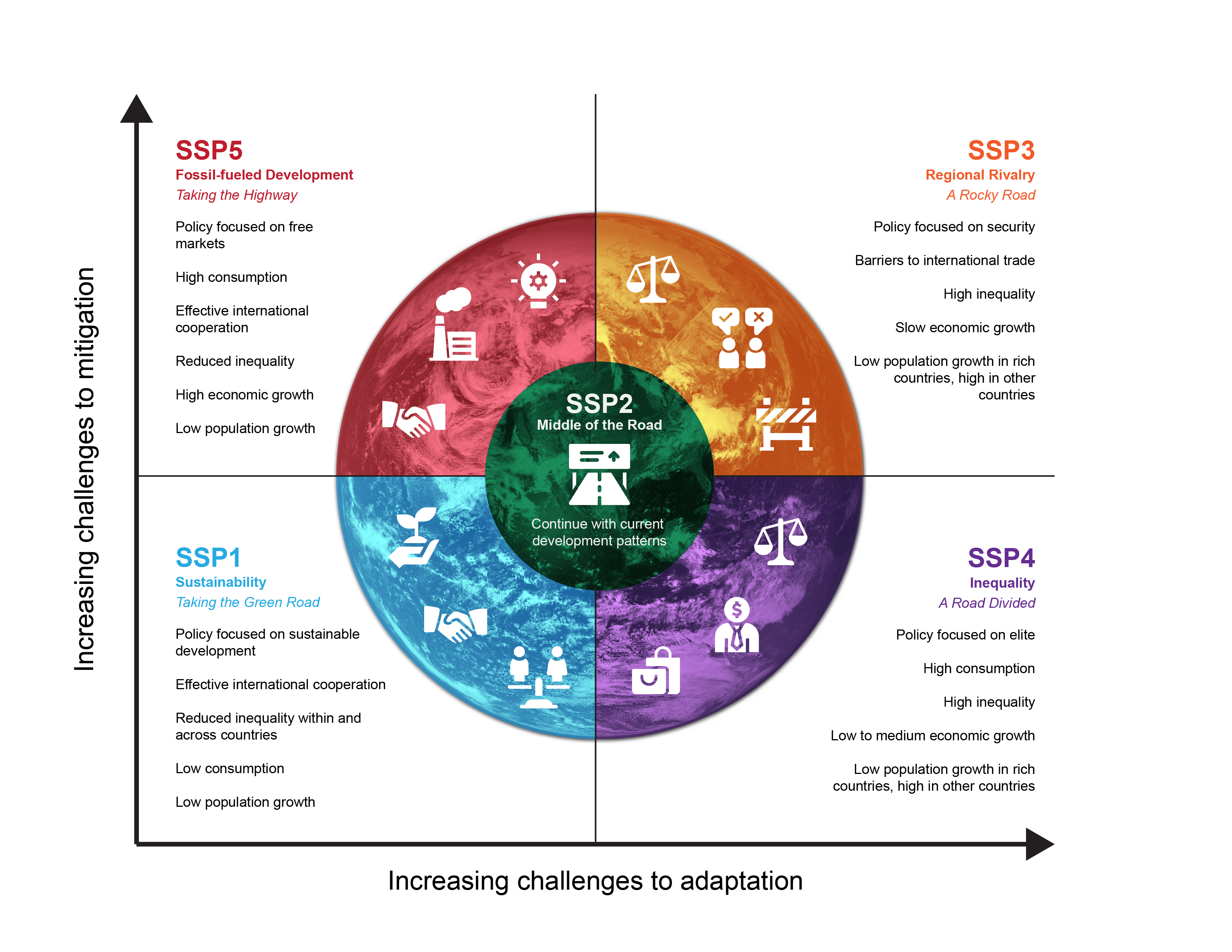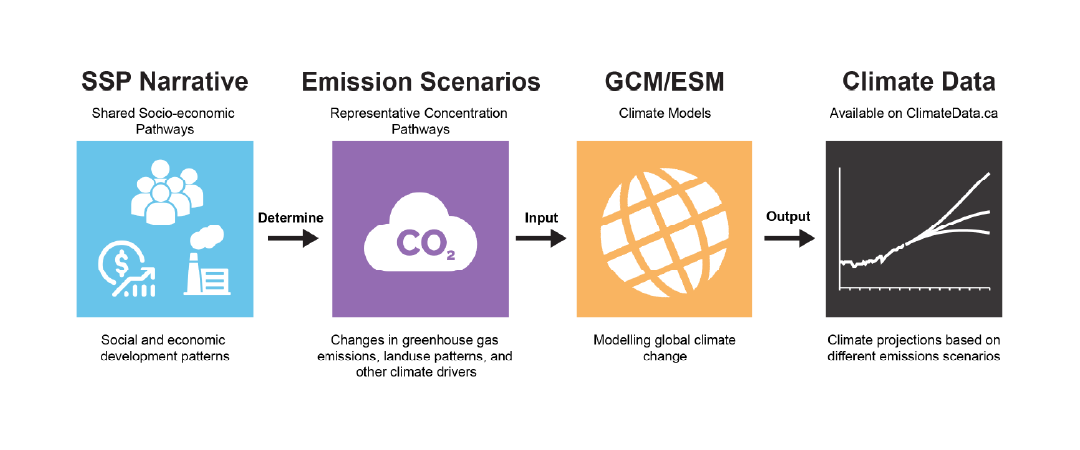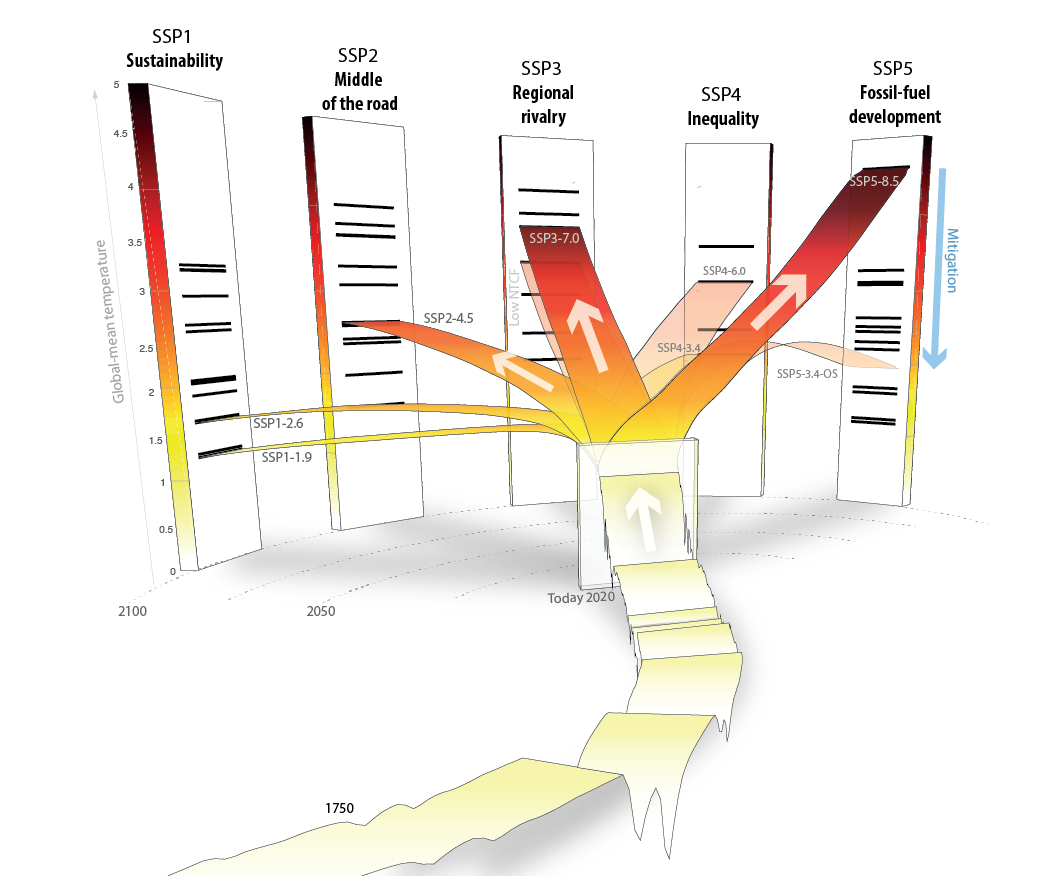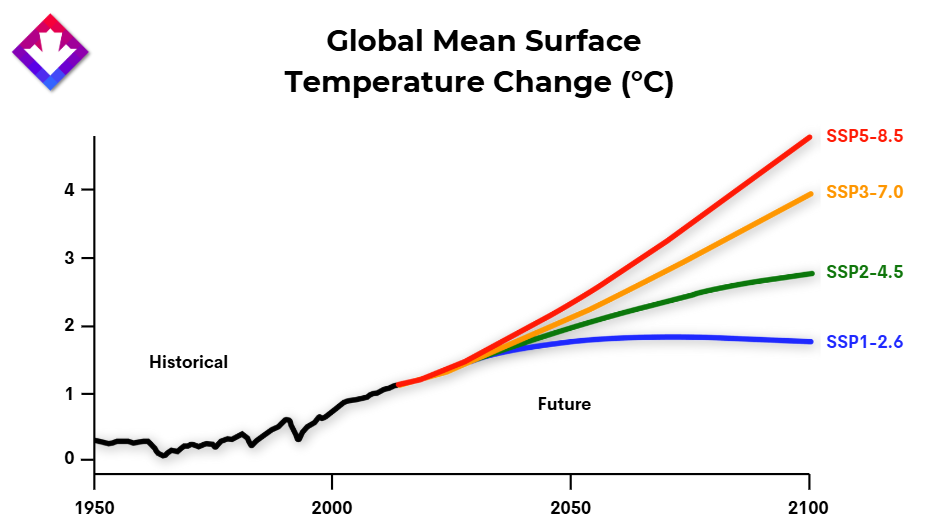Which SSPs do I use?
Every practitioner using future climate data will have to answer the question, “which SSPs should I consider?” To do so, the practitioner will first need to answer a number of questions, e.g., What components of my project are vulnerable to climate change? What level of risk am I comfortable taking? What is the lifetime of my project?
In some situations, for example, when considering a major highway, the consequences of closure due to an extreme flood event or another rare but damaging environmental hazard can be very high, affecting local food security, national GDP, and public safety. Therefore, if tasked with planning to protect this highway from future climate threats, the costs of adapting to SSP5-8.5 (a “high carbon” scenario) up to the end of the century may be considered worthwhile. However, in other circumstances, where the consequences are lower and/or the likelihood of damaging events is low, adapting to SSP5-8.5 may not be necessary or economically viable. Regardless of the project and the rationale, the question of “how much risk am I comfortable taking” is complex, undoubtedly requiring conversations with diverse partners and stakeholder groups to understand the broad range of potential impacts and implications.
A project’s planning horizon is another important consideration during this process. Over relatively short periods (i.e., the next decade), the range of projected climate change between different SSPs is small. In this case, considering any SSP, rather than relying solely on historical data, may be the most important consideration. However, after the middle of the century, the climate projections for the scenarios quickly diverge, which could result in widely varying impacts between the scenarios.
In applications not directly related to adaptation, where determining vulnerability and risk is not an important project component, the SSP selection process may consider additional factors. For example, of the SSPs, SSP5-8.5 projects the most global warming. As such, this SSP has a strong climate change signal compared to the background noise of natural climate variability. The strong signal to noise ratio may be useful in certain research contexts.
The complex nature of the climate system, climate models, and human factors makes it challenging to determine exactly how the climate will change.
What is known for certain is that the future climate will be different from the past and present. Regardless of which SSP ends up best reflecting the trajectory of climate mitigation, a certain amount of warming is already “locked-in”. By assessing more than one possible future, we can better prepare for a range of possible outcomes.




